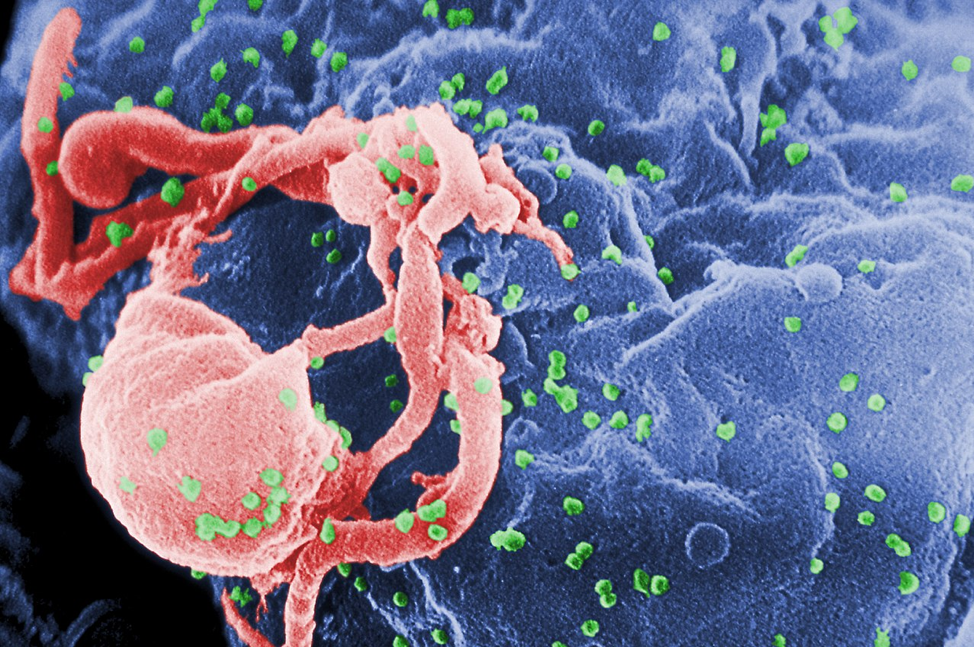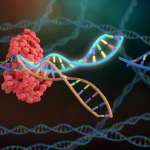by: Sherry Wu
Around every 9.5 minutes, one person in the United States alone is newly infected with human immunodeficiency virus (HIV) (Center of Disease Control and Prevention). This rapid rate at which HIV propagates is extremely alarming, hinting at the significant role that this virus plays on a larger scale. In fact globally, an estimated 37 million people are currently infected with HIV.
Thanks to many breakthroughs in research, the number of people dying from AIDS, a result of HIV, is significantly lower than the peak year of 2004. However, the sizable impact that HIV has on human lives is still undeniably present. This impact is felt much more heavily in some areas of the world, like sub-Saharan Africa. According to Avert, a global HIV and AIDS organization, more than half of the people in hospital beds in this region have some HIV-related condition. Thus, effective prevention and treatment of HIV is crucial to human wellbeing all over the world. There is already a breadth of information on the transmission of the virus. However, there is little understanding of the molecular mechanisms involved. Studying and clarifying such mechanisms provides vital insights on the HIV life cycle that may reveal many potential strategies to more effectively avert and restrain HIV infection, improving human health globally.
One of the most critical steps of HIV infection is the release of newly formed virions out of the host cell, where the virions can begin infecting more cells, furthering the maladie. Research in the past century on this process has shown that HIV cannot carry out this step on its own. The virus can only escape out of the host cell by hijacking one of the host cell’s innate systems: the ESCRT system. The ESCRT system is a collection of proteins in human cells that allow the cell to transport material outside of the cell. Although HIV’s recruitment of these ESCRT proteins has been discovered, a mechanistic understanding of this process has not yet been reached. The Hurley Lab in the department of Molecular & Cell Biology at UC Berkeley is currently working towards clarifying this phenomenon, recognizing the great potential applications that it has on the world of health and medicine.

Reaching an understanding of how HIV recruits ESCRT proteins presents many potential directions of developing HIV treatments. Because it is known that ESCRT proteins are required in the HIV life cycle, inhibiting the ESCRT proteins seems like a potential treatment for HIV. However, King Cada, PhD candidate in the Hurley and Bustamante labs at UC Berkeley, points out the caveat that ESCRT proteins are essential to normal cell function, so inhibiting them would obstruct human cells along with HIV. Instead, Cada suggests another promising treatment: delaying, rather than inhibiting, the ESCRT proteins. “The actual timing of when these proteins are recruited to the sites of where the viruses are forming is very very important;” says Cada. “If there is any sort of delay [in recruitment], the viruses that escape from the plasma membrane become non-infectious.” Cada explains that if the exact mechanism of ESCRT recruitment is understood, “we can design a drug that ‘tricks’ the ESCRT proteins”, presenting them with other tasks so that they do not immediately arrive at the site of the budding virions. By doing so, ESCRT recruitment is delayed, and the cell to cell spread of HIV is deterred as the virus is rendered non-infectious. These insights offered by Cada display the importance of understanding the exact mechanism of HIV replication. Perhaps, after this mechanism is clarified, more effective HIV treatments will be developed, and global HIV and AIDS rates will decrease significantly. We look forward to a future where HIV can be as easily treated and as unthreatening as the common cold.
Image source: Bret Kavanaugh







